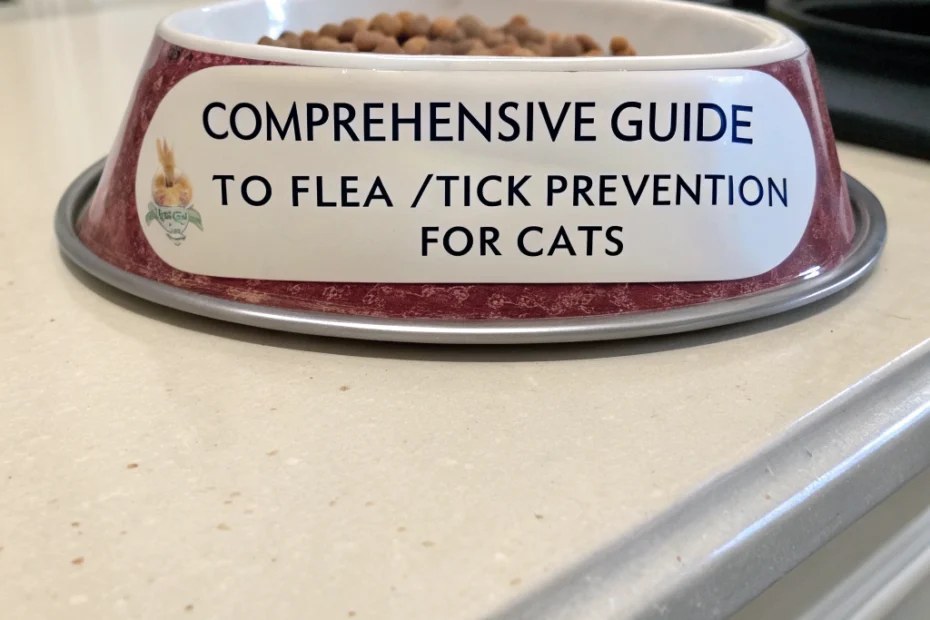At a Glance
- Fleas and ticks can transmit diseases and cause significant discomfort.
- Prevention options include topical spot-ons, oral medications, and cat-specific collars.
- Success = the right product + consistent schedule + a clean environment.
- Always use cat-only products and follow your veterinarian’s guidance.
How to Choose
Select prevention based on your cat and household needs:
- Age & weight: Check the label for minimum age/weight; kitten dosing differs from adult cats.
- Lifestyle: Outdoor or indoor–outdoor cats often need year-round coverage; indoor cats may still need seasonal protection.
- Health conditions & meds: Discuss kidney/liver disease, pregnancy/lactation, seizure history, and current medications with your vet.
- Form factor: Choose what you can give reliably—monthly topical, monthly oral, or a vet-approved collar.
- Spectrum & efficacy: Confirm it kills adult fleas, addresses life stages (eggs/larvae), and targets local tick species.
Safety & Setup
- Read labels carefully: Use cat-specific products only. Dog products or “multi-species” items can be toxic to cats.
- Dose appropriately: Select the correct weight band and complete the full dose interval.
- Avoid mixing products: Do not combine preventives unless your veterinarian instructs you to.
- After application: For topicals, prevent pets from grooming each other until dry. Monitor for drooling, tremors, vomiting, lethargy, or skin irritation and call your vet if seen.
Core Pillars of an Effective Plan
- Regular monitoring: Check for fleas (flea dirt) and ticks after outdoor time; watch for scratching or skin irritation.
- Environmental control: Wash cat bedding hot/dry hot weekly; vacuum carpets, rugs, and upholstery frequently; empty the vacuum promptly.
- Consistent schedule: Set reminders and apply/give preventives on time to break the parasite life cycle.
Placement & Environment Tips
- Create “safe zones” outdoors: Keep grass short, trim brush, and limit access to leaf litter where ticks thrive.
- Entry points: Use door mats and regularly clean areas where pets enter the home.
- Multi-pet homes: Treat each pet appropriately (species-specific) to prevent re-infestation.
Comparison: Chemical vs. “Natural” Approaches
- Veterinary, chemical-based products: Pros: Generally faster and more reliable; clear dosing and safety data. Cons: Possible side effects; must follow labels precisely.
- “Natural” or household options (e.g., diatomaceous earth for carpets): Pros: Can support environmental control. Cons: Variable effectiveness; many essential oils are unsafe for cats—use only vet-approved products; never apply DE directly to pets.
FAQs
How often should I treat my cat?
Most preventives are monthly, but intervals vary by product. Follow the label and your veterinarian’s instructions.
Do strictly indoor cats need prevention?
Often yes—fleas can hitchhike indoors on clothing or other pets. Your vet can tailor a plan to local risk.
Can I use a dog product on my cat?
No. Many dog products (and some “all-in-one” household pest products) are dangerous for cats.
What if I see a reaction after applying a topical?
Prevent further licking, gently wipe the area with a damp cloth, and contact your veterinarian immediately for next steps.
How long until I see results?
Adult fleas may die within hours, but full environmental control can take several weeks. Stay on schedule and clean your home regularly.
What to Do Next
Ask your veterinarian which product best fits your cat’s age, weight, lifestyle, and medical history. Set monthly reminders, clean home hotspots, and treat all pets appropriately to keep parasites at bay.
Medical disclaimer: This article is educational and not a substitute for veterinary care. Always consult your veterinarian before starting, changing, or combining flea and tick treatments.
